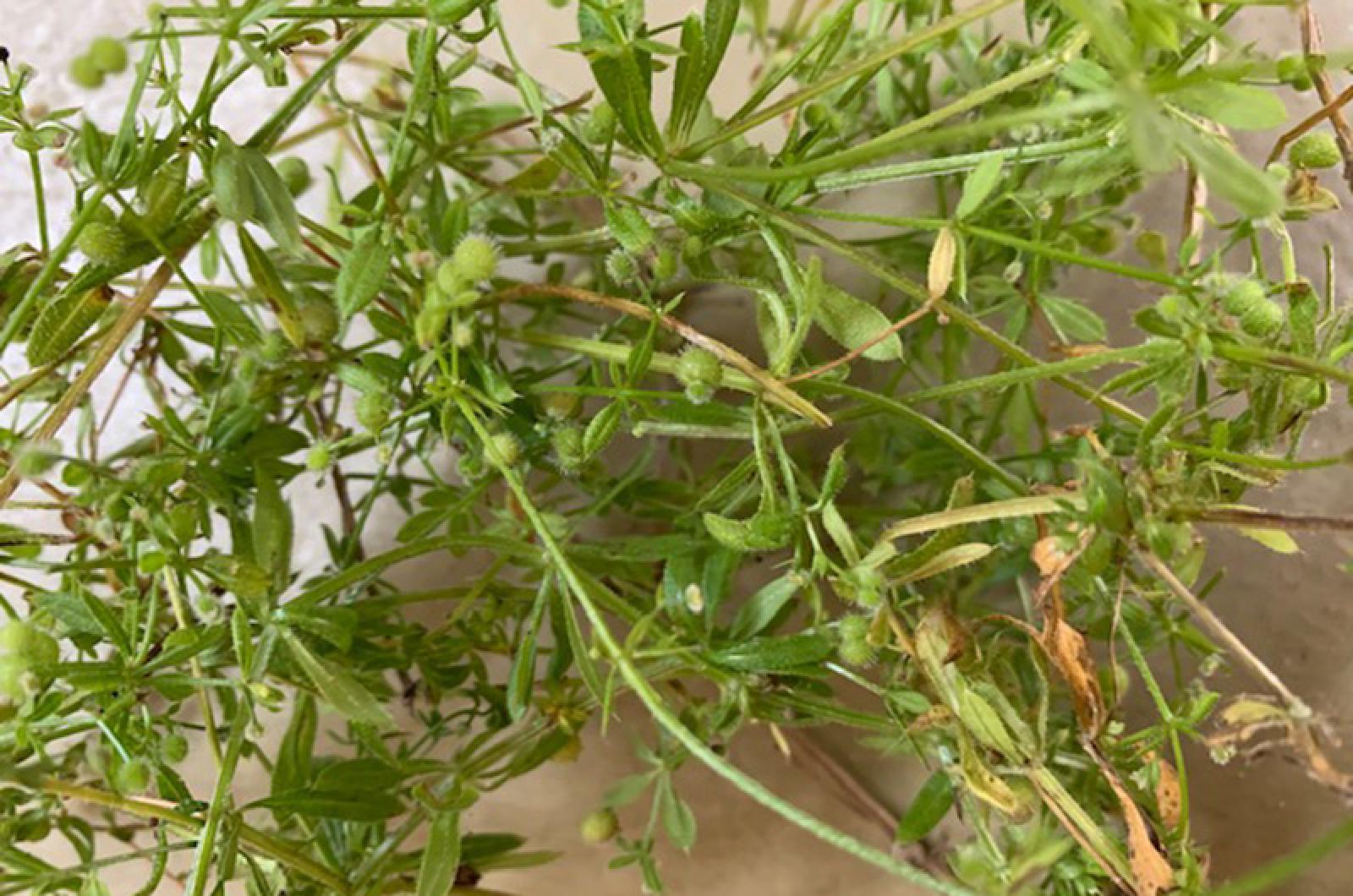Pat Tyra of Edgartown recently went through a bad patch.
The patch of plants, along with her concern, seemed to be spreading. She could tell she was in a sticky situation. Because of hairs and hooks on the leaves, stems, and very prickly seeds, a flotilla of flora seemed to attach itself to anything and everything it touched. Pat needed to find out what the problematic patch of plants were and what she could do about them.
Leave it to cleaver to overtake a yard. Cleaver, also called bedstraw and more than 30 other aliases, was the plant’s identity. Some of its other names are self-explanatory (grip grass, Velcro plant, stick a back, sticky willy, scratch, bedstraw) while others (Robin run in the grass, everlasting friendship, turkey grass, and goose grass) encourage inquiry. What is good for the goose is good for the gander, so perhaps add gander grass to the list because of the fowl’s affection for eating this herb.
There are many varieties of bedstraws on the Island, of which only a few are not native. Not surprisingly, one common one, Galium aparine, translates as “bedstraw that sticks.”
Another source suggests the word Galium is derived from gala, meaning milk, and alludes to the use of this plant to strain curds during cheesemaking. Galium tends to cling to itself and to other plants, creating a screen of sorts when it is gathered up and spread out.
A warning for Pat and others who may try to remove bedstraw from their land: this plant can cause dermatological irritation, including rash and blistering, to those with sensitive skin. It also deters elimination, with its tap root and brittle stems that break while leaving the root and other parts of the plant intact. Maybe slick willy is as good a name as sticky willy.
Bedstraws boast benefits that help and heal as well. The roots of the plant make a red dye, and the spring shoots and early leaves are edible and considered a spring tonic high in vitamin C, and thus are also preventative for scurvy. It is said that bedstraw seeds even make a passable coffee. Since I’m a tea drinker, I can’t confirm or deny the assertion.
Some other intriguing uses include the coloring and scenting of cheese, using the small flowers to provide a “honey-like” fragrance, and an additive to curdle milk. Medicinal uses abound, making it appear as a cure-all, from treating kidney stones to fever and, oddly, skin irritation (which means it both causes and cures the same ailment). During World War II, British children were reportedly paid to harvest bedstraw for pharmaceutical companies to make medicine to combat infections.
Respect this plant’s hardiness: nothing gets in its way or impedes its progress. The seeds can survive animal consumption, moving, with no damage to themselves, through the digestive system of cattle, sheep, goats, pigs, horses and birds. Bedstraw will also bulldoze over other plants, and so the seeds of some non-native varieties are not welcome. One plant can produce up to 400 of those sticky seeds, so the concern is understandable.
All of this information might make Pat feel prickly, but my advice would be stick to it, even if it sticks with you.
Suzan Bellincampi is islands director for Felix Neck Wildlife Sanctuary in Edgartown and the Nantucket Wildlife Sanctuaries. She is also the author of Martha’s Vineyard: A Field Guide to Island Nature and The Nature of Martha’s Vineyard.




Comments
Comment policy »